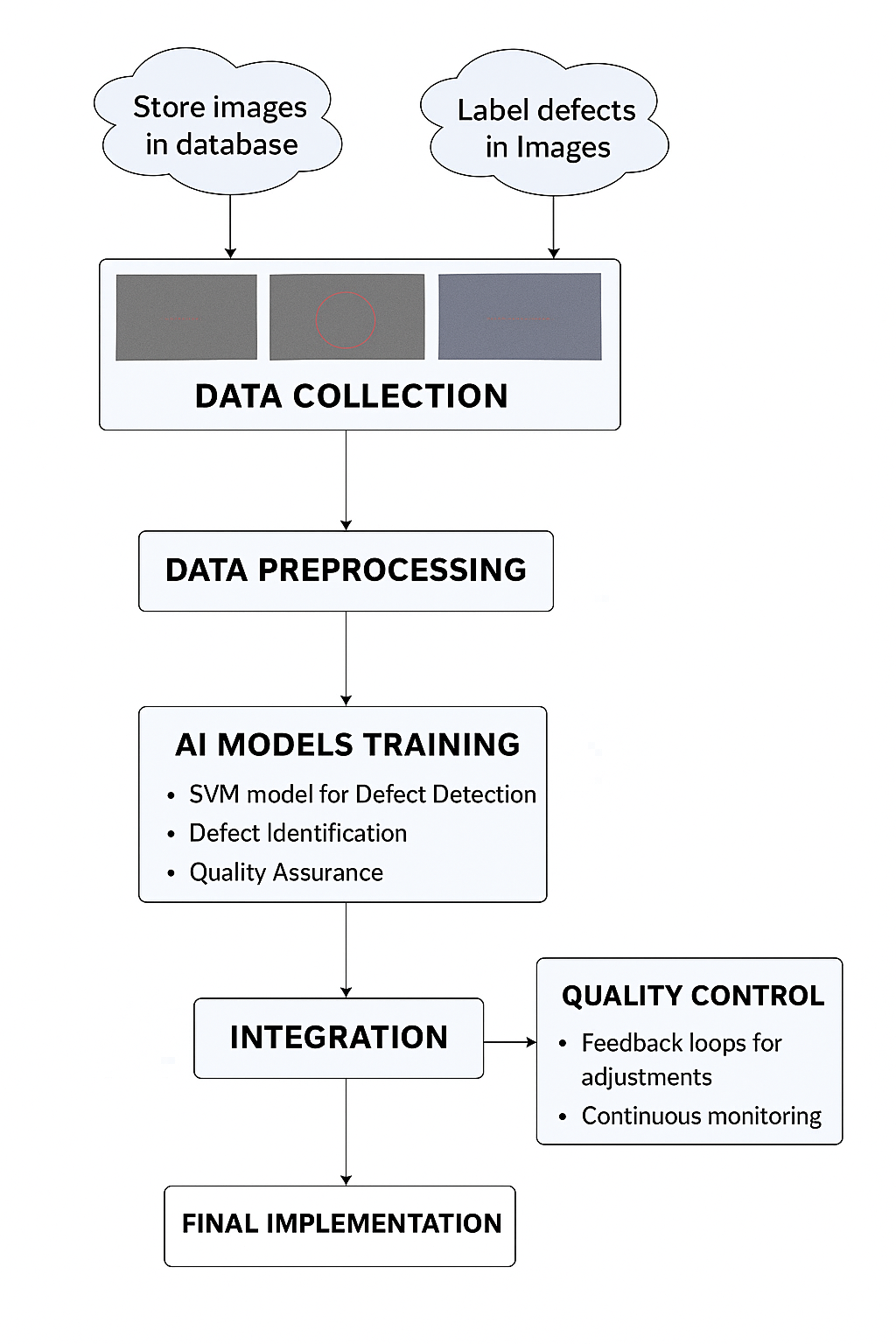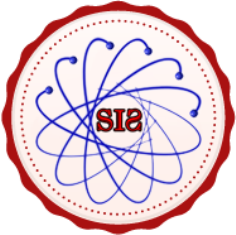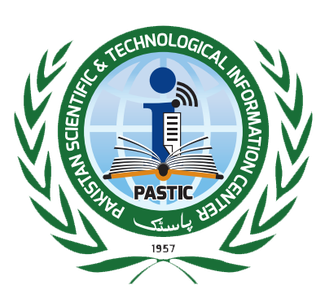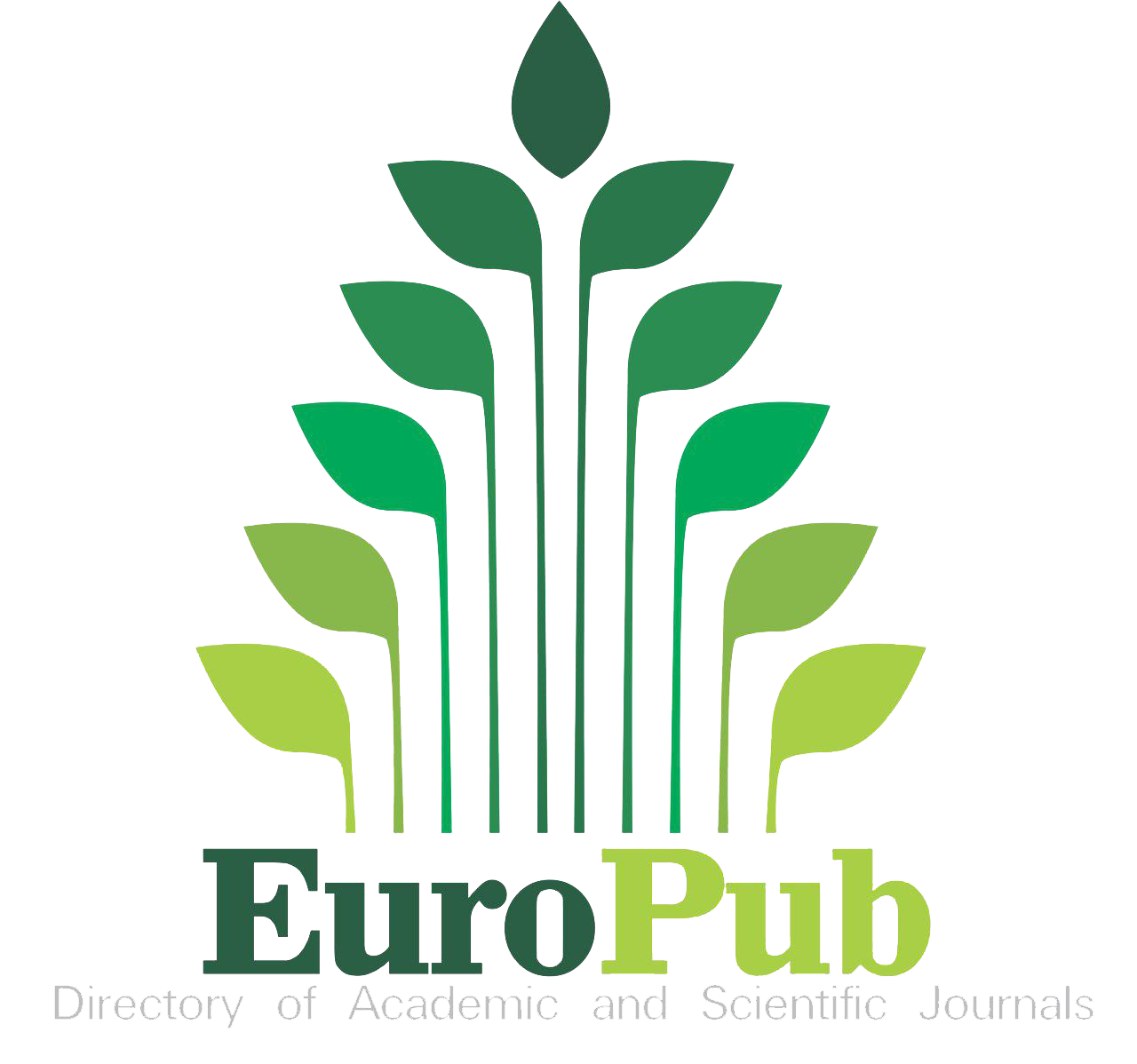An Innovative Machine Learning (ML) Approach in Fabric Defect Detection and Quality Assurance
Keywords:
Fabric Defects Detection, Hole Defect, Stain Defect, Machine Learning, Image processingAbstract
The garment and textile industries are essential sectors that significantly contribute to a nation's economic development. Fabric defect detection is a complex problem in the textile and technology industries since the efficacy and efficiency of automatic defect detection determine the quality and cost of any textile product. In the past, the textile industry used manual labor to find flaws in the fabric production process. The primary disadvantages of the manual fabric flaw identification technique are human weariness, lack of focus, and time consumption. This article introduces an innovative automated system for detecting garment defects powered by machine learning to revolutionize the traditional system and replace the manual inspection system. This innovative advanced system is trained and assessed using the 500-image dataset from the Artistic Milliners Company in Pakistan. The machine learning algorithm and image processing techniques form the foundation of AI technology, offering the best flaw detection accuracy. This work presents an automated fabric defect detection system driven by a supervised machine learning algorithm, i.e., SVM, that can accurately and precisely detect "hole" and "stain" faults. The system achieves a 72% precision and 74% recall for holes and an 85% precision and 83% recall for stains by utilizing a machine learning algorithm, i.e., SVM. The proposed method throws up vital issues like scalability and fabric sort flexibility. Compared to traditional manual processes, this new method lowers inspection costs by 65%, increasing productivity and setting a standard for automated and sustainable textile quality monitoring.
References
Z. G. Mengqi Chen, Lingjie Yu, Chao Zhi, Runjun Sun, Shuangwu Zhu, “Improved faster R-CNN for fabric defect detection based on Gabor filter with Genetic Algorithm optimization,” Comput. Ind., vol. 134, p. 103551, 2022, doi: https://doi.org/10.1016/j.compind.2021.103551.
Y. Xu et al., “FabricGAN: an enhanced generative adversarial network for data augmentation and improved fabric defect detection,” Text. Res. J., vol. 94, no. 15–16, pp. 1771–1785, Aug. 2024, doi: 10.1177/00405175241237479.
G. Revathy and R. Kalaivani, “Fabric defect detection and classification via deep learning-based improved Mask RCNN,” Signal, Image Video Process., vol. 18, no. 3, pp. 2183–2193, Apr. 2024, doi: 10.1007/S11760-023-02884-6/METRICS.
S. Shakir and C. Topal, “Unsupervised fabric defect detection with local spectra refinement (LSR),” Neural Comput. Appl., vol. 36, no. 3, pp. 1091–1103, Jan. 2024, doi: 10.1007/S00521-023-09080-0/METRICS.
Y. Dasari, V. K. Chebrolu, M. Harsha Vardhan, S. Kondru, and V. R. Pilli, “Selective Search Based Gabor Wavelet for Fabric Defect Prediction Using Enhanced R-CNN,” SN Comput. Sci., vol. 6, no. 4, pp. 1–13, Apr. 2025, doi: 10.1007/S42979-025-03857-X/METRICS.
Y. Wang, Y. Xu, Z. Yu, and G. Xie, “Color-patterned fabric defect detection based on the improved YOLOv5s model,” Text. Res. J., vol. 93, no. 21–22, pp. 4792–4803, Nov. 2023, doi: 10.1177/00405175231178947.
P. Yashini, G. Karthika, T. Sunitha, R. Renugadevi, and R. Berlin Magthalin, “Machine Learning-Based Textile Fabric Defect Detection Network,” 4th Int. Conf. Sustain. Expert Syst. ICSES 2024 - Proc., pp. 1470–1477, 2024, doi: 10.1109/ICSES63445.2024.10763088.
A. A. M. Abu Saleh Muhammad Saimon, “ENHANCING TEXTILE QUALITY CONTROL WITH IOT SENSORS: A CASE STUDY OF AUTOMATED DEFECT DETECTION,” Glob. Mainstream J., vol. 1, no. 1, p. 4, 2024, doi: 10.62304/ijmisds.v1i1.113.
L. A. M. B. Rúben Machado, “Textile Defect Detection Using Artificial Intelligence and Computer Vision—A Preliminary Deep Learning Approach,” Electronics, vol. 14, no. 18, p. 3692, 2025, doi: https://doi.org/10.3390/electronics14183692.
B. NALBANT, K. G., & BOZKURT, “Application of machine learning methodology for textile defect detection,” Ind. Textila, vol. 76, no. 3, pp. 372–386, 2025, doi: 10.35530/IT.076.03.2024108.
“Fabric Defect Detection Method Using SA-Pix2pix Network and Transfer Learning,” Appl. Sci, vol. 14, no. 1, p. 41, 2024, doi: https://doi.org/10.3390/app14010041.
F. G. Yaşar Çıklaçandır, S. Utku, and H. Özdemir, “Determination of various fabric defects using different machine learning techniques,” J. Text. Inst., vol. 115, no. 5, pp. 733–743, 2024, doi: 10.1080/00405000.2023.2201978.
K. A. H. Rui Carrilho, “A Novel Dataset for Fabric Defect Detection: Bridging Gaps in Anomaly Detection,” Appl. Sci, vol. 14, no. 12, p. 5298, 2024, doi: https://doi.org/10.3390/app14125298.
S. Dlamini, C. Y. Kao, S. L. Su, and C. F. Jeffrey Kuo, “Development of a real-time machine vision system for functional textile fabric defect detection using a deep YOLOv4 model,” Text. Res. J., vol. 92, no. 5–6, pp. 675–690, Mar. 2022, doi: 10.1177/00405175211034241.
S. Zhou, J. Zhao, Y. S. Shi, Y. F. Wang, and S. Q. Mei, “Research on improving YOLOv5s algorithm for fabric defect detection,” Int. J. Cloth. Sci. Technol., vol. 35, no. 1, pp. 88–106, Mar. 2023, doi: 10.1108/IJCST-11-2021-0165.
X. K. Yongbin Guo, “Automatic Fabric Defect Detection Method Using AC-YOLOv5,” Electronics, vol. 12, no. 13, p. 2950, 2023, doi: https://doi.org/10.3390/electronics12132950.
W. Li, M. Chen, L. Zhang, and J. Tian, “SR-NET: a lightweight enhanced feature extraction network for fabric defect detection,” Text. Res. J., 2025, doi: 10.1177/00405175241293349.
S. Ma, R. Zhang, Y. Dong, Y. Feng, and G. Zhang, “A Defect Detection Algorithm of Denim Fabric Based on Cascading Feature Extraction Architecture,” J. Inf. Process. Syst., vol. 19, no. 1, pp. 109–117, Feb. 2023, doi: 10.3745/JIPS.04.0265.
S. Saleem, S. Prakash, and D. Williams, “A Systematic Review of Enhancing CNN Performance in Automated Fabric Defect Detection Through Sampling Techniques for Imbalanced Datasets with the Developed CNN Model,” SSRN, Oct. 2024, doi: 10.2139/SSRN.4858156.
J. Barman and C. F. J. Kuo, “Fully Automatic and Precisely Woven Fabric Defect Detection Using Improved YOLOv7-Tiny Model Utilizing Enhanced Residual Convolutional Network,” Fibers Polym., vol. 26, no. 1, pp. 353–368, Jan. 2025, doi: 10.1007/S12221-024-00811-1/METRICS.
S. S. M. & H. G. Clarke, “Conditional image-to-image translation generative adversarial network (cGAN) for fabric defect data augmentation,” Neural Comput. Appl., vol. 36, pp. 20231–20244, 2024, doi: https://doi.org/10.1007/s00521-024-10179-1.
B. X. Feifei He, “A review of fabric defect detection in textile manufacturing,” J. Text. Inst., 2025, doi: https://doi.org/10.1080/00405000.2025.2502188.
E. Y. Rui Carrilho, “Toward Automated Fabric Defect Detection: A Survey of Recent Computer Vision Approaches,” Electronics, vol. 13, no. 18, p. 3728, 2024, doi: https://doi.org/10.3390/electronics13183728.
B. Z. Aqsa Rasheed, “Fabric Defect Detection Using Computer Vision Techniques: A Comprehensive Review,” Math. Probl. Eng., vol. 2020, no. 2, 2020, doi: 10.1155/2020/8189403.
T. Meeradevi and S. Sasikala, “Automatic fabric defect detection in textile images using a labview based multiclass classification approach,” Multimed. Tools Appl., vol. 83, no. 25, pp. 65753–65772, Jul. 2024, doi: 10.1007/S11042-023-18087-7/METRICS.
R. H. G. and Y. L. P. Guo, Y. Liu, Y. Wu, “Intelligent Quality Control of Surface Defects in Fabrics: A Comprehensive Research Progress,” IEEE Access, vol. 12, pp. 63777–63808, 2024, doi: 10.1109/ACCESS.2024.3396053.
M. S. Ahmet Ozek, “Artificial Intelligence Driving Innovation in Textile Defect Detection,” Textiles, vol. 5, no. 2, p. 12, 2025, doi: https://doi.org/10.3390/textiles5020012.
R. A. Chowdhury, S. Bhattacharjee, S. Sarker, A. A. Gani, and P. D. Roy, “An advanced machine vision technique for quality control of fabric in the textile industry,” 2025, Accessed: Oct. 02, 2025. [Online]. Available: https://dspace.bracu.ac.bd:8443/xmlui/handle/10361/26612

Downloads
Published
How to Cite
Issue
Section
License
Copyright (c) 2025 50sea

This work is licensed under a Creative Commons Attribution 4.0 International License.




















